
It’s an interesting point that Patrick Huyghe, quoted at the beginning of this chapter making a quip that will rankle with many respected historians (not the least because it’s true) makes when he says that of all the landmasses in the world, the continent of America - north and south - was the very last inhabitable area to be colonised. This is of course mostly due to its being originally cut off by huge ice sheets and glaciers stretching across what would become the border between it and Canada. Only when the thaw began, about an estimated 12,000 years ago, were primitive humans able to move down south and into the continent of America. Still, given how so many of its proud denizens go on about America being the greatest country in the world (it’s not a country, guys: it’s a continent - is Europe the greatest country in the world? Asia? Africa? Christ. Anyway) it’s rather sobering to find that, technically speaking, it was the last choice for humans to live in, way back then.

But come - eventually - they did, driven by changes in weather and hunting patterns, and as we’ve already noted earlier, the first recorded people to settle in what would become America were called the Clovis, after the area in Mexico where the first fossilised remains were discovered. It has in fact been theorised that there was another race there before them, a race who have been somewhat obviously perhaps named the Pre-Clovis, but no evidence of their existence has been uncovered, and as it stands they’re more a sort of working theory, like many ancient civilisations who have vanished without a trace, but who are expected to have existed, even if their presence cannot be proven.
As the descendants of the Clovis, who vanished suddenly and were replaced by what we came to know as Native Americans, are believed to have come across the land bridge of Beringia from Asia, it’s actually not too surprising that a certain Italian mariner, arriving in America just before the turn of the sixteenth century, mistook it for Asia. The characteristics and features of many of the people would have added fuel to his hypothesis, and indeed Columbus is believed to have been right in identifying the people, if not the continent, as Asian. It’s certainly more or less accepted now that the ancestors of the first Americans came over, either by foot or in small boats, from places like Russia and China, accounting for some of the more mongoloid and oriential features of even today’s Native Americans.

Pottery found in Ecuador, in a place called Valdivia is dated to around 4,000 to 3,000 BC, and has been identified by experts as being so similar to that made in the Japanese island of Kyushu that the almost inescapable conclusion is that somehow, Japanese explorers were in America at that time. The pottery, it is said, could not simply have developed out of influences over time, as it is too complete, too perfect, and doesn’t show signs of having slowly developed, leaving archaeologists with only the one workable hypothesis. There is support for the possible shipwrecking/stranding of Japanese fishermen in South America, so the voyage, as it were, may not have been one of exploration, or intentional, and therefore the sailors may have “discovered” America - at least, South America - by accident.

Like many of the theories, although most are at least backed up by some sort of evidence, the idea that Chinese explorers were in America long before the Spanish cannot be corroborated, and much of what we know comes from what may very well be stories and myths. However we do know that the Chinese were exploring long before Europeans were. The problem, as I say, is proof, of which there is none. No archaeological finds, no pottery, no skeletons, no monuments. What we do have are accounts that speak of Ta-Chang (no, not Ca-Ching!) and Shu-Hai, who were said to be the greatest explorers you’ve never heard of, and served someone called the Great Yu. No, no, I’m serious, that’s what he was called. If he existed. Which we don’t know. But he probably did. Maybe.
He in turn served an emperor who again may have been a figment of some literary scholar’s mind, one of five who may not have existed, called Yao. Yeah I know. Anyway, around 2250 BC (this is BC, people, when Europeans were probably still fighting over animal bones or something, not even intelligent enough yet to be getting chased around by Romans) he thought it would be a spiffing idea to see what the world was like, but had no particular wish to leave the comforts of home. So he detailed, you guessed it, Ta-Chang and Shu-Hai to do it for him. Off they went, travelling north and south, and just to be absolutely sure they covered everything, west and east too.
Actually, no. They went before 2250, probably more at the beginning of the twenty-fourth century, as his master had already passed on before Great Yu was asked by his successor, the hilariously-named Shun (can you imagine? “Bow down, people! Shun the Emperor!” Um, what did he say?) to compile a report on how his boys had done. Great Yu said sure, he’d do it after tea, just leave it with him. He must have put it off for a long time though, as Shun had bought the farm before he got around to it, leaving the throne free, a chance which Yu did not pass up, showing he was not called Great for nothing. With more time on his hands now, flunkies galore to carry out the mundane day-to-day tasks that had occupied him and kept him from fulfilling the edict of both his predecessors, Yu got right down to it and by 2208 had written it all down. It became known as
Shan Hai Ching, or
The Classic of the Mountains and Rivers.

There’s no way to know when it was actually written, as the page with the copyright date on it is all smudged, and the only copy we have today is as recent as the sixth century, and not BC either. We’re talking after the birth of himself here, not before. It is however regarded widely as the first proper text of the geography of the world, though as I mentioned in my journal on world exploration,
The Men Who Drew the Map of the World, like Odysseus’s journeys, the text is filled with detail that makes it unreliable and hard to take as factual. Fantastic beasts (and where to find them), strange people and odd places which cannot be correlated even today with any known land sit side by side with sharp, precise accounts of rivers, mountains and measurements, descriptions of flora and fauna, and directions of rivers and seas.
The text is divided into thirty-two books, though only half that number survive today, and it is in Book IV, entitled “Book of the Eastern Mountains” where some scholars believe the two intrepid Chinese navigators are referring to America. Almost all of this study is made thanks to a lady from Chicago called Henriette Mertz, who was quite an explorer herself, and served in World War II as well as on the Manhattan Project to build America’s atom bomb. She identified a range referred to as Aspen Mountain as Long’s Peak in northern Colorado. With this as a marker, she reckoned she was able to follow the journey of Ta-Chang and Shu-Hai down the coast of southwestern America along the Rio Grande down into Texas. Once she had this established, Mertz could trace the path of the two Asian explorers from Canada and Alaska down to Mexico.
 (You know, this may not be her, but it's the only picture I can find, and it is linked with the books on American discovery written by Mertz. I have to assume it is her, as she died in 1985. What her cat thought about the ancient exploration of America is not recorded).
(You know, this may not be her, but it's the only picture I can find, and it is linked with the books on American discovery written by Mertz. I have to assume it is her, as she died in 1985. What her cat thought about the ancient exploration of America is not recorded).
Placing the two boys sailing the coast of America, some of their descriptions of animals, which would have seemed outlandish and fictional to readers in China, who knew of no such things, actually now make some sort of sense, Mertz decided. From Huyghe’s book the following:
“The pelicans that looked like ducks with men’s legs and derived their name from their cry were whooping cranes. The beast that looked like a rabbit with a crow’s bill, an owl’s eyes, the tail of a snake, and that pretended to sleep when seen was surely a possum. The striped cattle whose cry resembled a person stretching and yawning were caribou. The man-eating, white-headed birds the size of domestic fowl with tiger claws and rat’s legs sound like an exaggerated reference to bald eagles. And the birds that flew backward, as absurd as that might have sounded to Chinese skeptics who later mocked the account by drawing ducks looking over their shoulders and flying backward, were undoubtedly hummingbirds, a bird indigenous to America.”
So now it becomes obvious how people seeing strange animals they had never encountered before might make what might seem wildly fanciful observations of them which, in reality, tally up quite well with what we on this side of the Atlantic would call ordinary animals. The eye of the beholder, huh? This bit, however, seems a little less likely:
“Book IX also states outright that the Great Yu had sent Shu-Hai to “walk from the farthest limit of the East to the farthest limit of the West.” Having done so, the dauntless surveyor came up with the measure of the world: “five hundred thousand and ten times ten thousand paces and nine thousand eight hundred paces.” Mertz did not double-check this statement.”
I bet she didn’t. There is however an interesting so-called observation (more likely a myth) about an archer who travels to the sun’s birthplace, but finds ten suns instead of one, and shoots down nine. I’ll have to check, but this sounds familiar and I’m sure there’s a Chinese myth somewhere in one of my other journals about someone shooting down six out of seven moons or something, so maybe Ta-Chang and Shu-Hai were adapting one of their own legends to what Mertz believe has something to do with the Grand Canyon. I mean, the Chinese always were and to a great extent still are big on symbolism and metaphor, and nobody believes for a second these guys met an actual archer, so there’s probably a grain of truth hidden in there somewhere, though likely one we will never unearth. It may even be a creation myth told by one of the Native American tribes to the two Chinese (or one of them, assuming they split up, which they surely must have done).

The more you look - or the more she looked, anyway, or at least others with more time on their hands and better reason to than I, peeping over their shoulders and copying down their conclusions like some schoolkid cheating at an exam - the more really odd descriptions start to make some sort of sense. As Huyghe says,
“Floating Ghosts Country” could be a northern European country where the aurora borealis appears. The “Sunken Eyes People” may be a reference to Europeans. The “Land of Arms” might be a country where the sleeves of people’s clothes ballooned out, “Three Head Land” a place that had three heads of state.”
I particularly like the “Floating Ghosts Country” one: you can really see how this could impress itself upon the minds of men who were, certainly, men of science and yet came from an age and indeed a culture wherein the spirits of ancestors were firmly believed to roam the earth, and they might even have considered that these ghosts were watching over their enterprise.
The Olmec people are recognised as one of the mother cultures of Central America, a culture that gave rise to many others, including the famous Maya. It’s believed now that explorers from the Shang Dynasty, which flourished around the period between the eighteenth and twelfth century BC, had an undeniable effect on the Olmec. The parallels are numerous, from the similarities between feline cults (tiger for the Shang, jaguar for the Olmec), the dragon gods both worshipped and their use of jade, both for decoration and in burial ceremonies.

Despite the amusing story of the Chinese emperor who attempted to cross a river in a ferryboat held together with glue, which of course evaporated and caused the boat to fall apart (lending new meaning to a popular Irish phrase, I will in me glue!) the Chinese are credited with pretty much the discovery of everything, from gunpowder to fireworks and writing to tea, and in that same vein they are accepted to have been one of the first sea-faring nations. That then would tie in with crossing the Pacific Ocean over three thousand years before Columbus made his way across the Atlantic.
Another point made to legitimise the theories of Chinese contact with the Olmec is the appearance of bark paper. This is, apparently, made from - anyone? And is at the heart of the bark-cloth and paper-making industry that flourished among the Maya and other civilisations in South America. I surely don’t need to say bark paper originated in China, do I? I do? Bark paper originated in China. There. Sadly, there are few examples of this sort of process left in America, as once the god-fearing Catholic Spanish missionaries stuck their collective oar in and pronounced these bark-paper books “evil” (duh) they set about collecting and burning them (double duh), consigning any evidence of previous civilisation - whether intentionally or just as a by-product of their arrogance - to the flames.
You can’t burn stone though (well you can but it won’t destroy it and these guys weren’t exactly going to go to that much trouble!) so we’re left with runic symbols that represent cosmic energy on pyramids, mounds, altars, murals and carvings, as well as the winged serpent, the cosmic eye and the good old yin-yang that link the two cultures. Some time around the sixth or fifth century BC it’s postulated that Chinese sailors arrived and created a colony in, of all places, El Salvador, where Columbus would fall on his knees almost a thousand years later naming the land San Salvador. How’s that for history taking the mickey huh? From this small colony rose the great and ancient Maya civilisation, which stretched into the jungles of Mexico, Honduras and Guatemala and which, with the help of their new Asian allies, battled and defeated the powerful Olmec. Possibly.
Meanwhile, a new form of art based on scrolls, popular in Asia, began to spread throughout South America, one of the greatest examples being found in Izapa, Mexico, carved on rocks and featuring a host of symbols known to relate to Asian culture and mythology, such as tigers, fishes, turtles, serpents, rain clouds and plumed birds, as well as that old mainstay, yin-yang.
Strangely enough, the primary motivation of Chinese explorers for setting out across the sea appears to have been a search for immortality, and this can be taken literally. When I read that I thought it meant to ensure that their names went down in history, but no: they actually were searching for eternal life. They believed a form of hallucinogenic mushroom (cosmic, man!) grew on three mountainous islands they called Phêng-Lai, Fang Chang, and Ying-Chou, and which would grant humans immortality or deep wisdom. They envisioned an enlightened, immortal civilisation living there, consuming the
ling-chin, as the fungus were called, which enabled them to stave off death. Needless to say, they’re still looking.

Despite our long and mostly successful tradition of barging in everywhere we’re not wanted, sticking our noses in where they’re not needed and loudly proclaiming that our god is the only one, and all others are hereby evicted (an attitude which has surely landed more than one pious missionary in the boiling pot of water among the potatoes and carrots), this kind of behaviour is not unique to white men. While we certainly can claim to have “civilised”, or at least converted more of the world than any other race, the Chinese weren’t above a spot of preaching and attempts at conversion themselves. In fact a Buddhist monk called Hiu-Shen headed over to what was believed to be America (called Fu-Sang) around 438 and spent forty years wandering the country, preaching to anyone who would listen, then sodded off back home. Once there, like any good traveller and explorer, he began to write down an account of his time spent in Fu-Sang.
Named for the Fu-Sang tree, with its red, pear-shaped fruit and its leaves like bamboo shoots, the country was, according to Hiu-Shen, populated by men who did not make war and who lived in “houses without walls” - possibly a reference to Indian wigwams and tepees - and who made paper and cloth from the bark of the Fu-Sang tree. They had domesticated horses, which pulled their carts, and though these people were clearly intelligent they placed no value on gold or silver. He also wrote of the “Kingdom of Women”, located 350 miles east of Fu-Sang, where children grew to adulthood in four years, and where the women were “shy and hairy”. References were made to mountains which were covered all year round in snow, and a black gorge. Also a luminous dragon. Um.
However, among all the marvels and rather fanciful descriptions given by the monk - women copulating with serpents, birds that gave birth to humans, a fountain of wine - the one thing the court of the emperor could not believe was the idea of women choosing husbands. How, they asked, could females be granted such power? Ludicrous! Next you’ll be asking us to believe mountains of fire can exist - oh. Oh. You
are asking us to believe mountains of fire can exist. Well, you know, maybe they can. We’ve heard stranger things. But women choosing husbands? Come on brother: you’re pulling the proverbial here, aren’t you? Do us a lemon; we have brains, you know. You’re not talking to a bunch of uneducated savages now. The very idea!
Notwithstanding the above, scholars now believe that the Chinese did indeed start a colony in California around the fifth century, and in 1751 a French academic was perhaps the first to voice the opinion or theory that Columbus had been beaten to the discovery of America. Well beaten. By about a thousand years, give or take. This was long before the West was opened up, of course, before even the Louisiana Purchase, and before the very existence of Alaska was known. The west coast of America didn’t even appear on maps at this time, and would have been looked upon with as much mystery and trepidation as the old “Darkest Africa”, a place to wonder about but never to contemplate visiting, where strange beasts and even stranger humans might roam, where odd and savage practices might be carried out, and where the chances of escaping with one’s life if one ventured there might be very low indeed.



















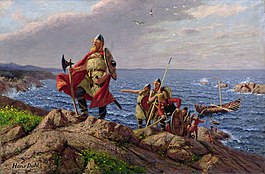

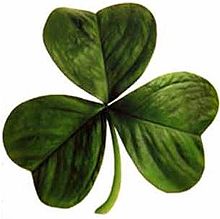
 Rather like the burial chamber in Newgrange in Ireland, the sun’s first rays at the summer solstice (June 21) do indeed strike the inscription first.
Rather like the burial chamber in Newgrange in Ireland, the sun’s first rays at the summer solstice (June 21) do indeed strike the inscription first. 


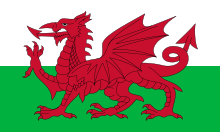

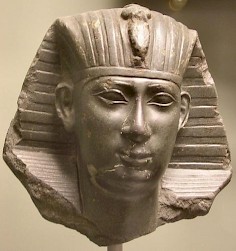










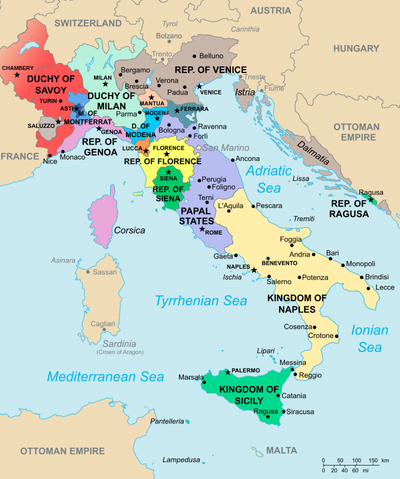

 Linear Mode
Linear Mode
